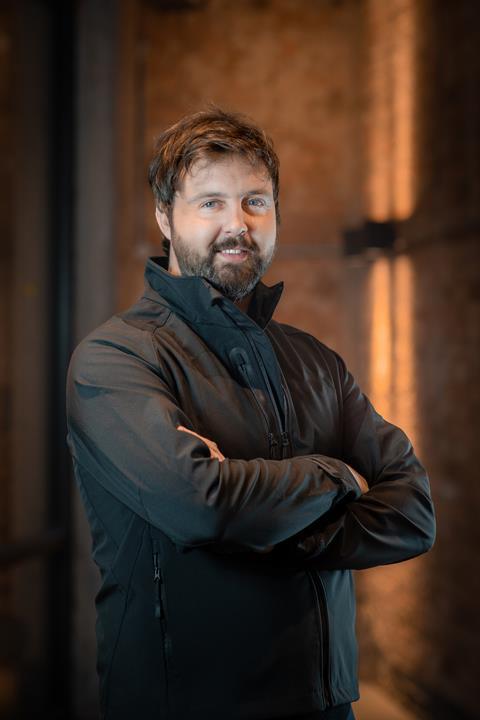Our future depends on a more adaptive, resilient, high-tech and environmentally-conscious built environment, says David Mitchell of XYZ Reality

David Mitchell is founder and CEO of XYZ Reality
As we settle into 2022, sustainability, collaboration, social value and technology remain key focal points for the construction industry. And all are aspects ingrained in the Transforming Infrastructure Performance (TIP): Roadmap to 2030.
This is a long-term vision which sets out a path to a more adaptive, resilient, high-tech and environmentally-conscious built environment.
The roadmap is a substantial but realistic undertaking, presenting a welcome opportunity for the UK construction industry to enhance its capabilities. If we are to deliver sustainable infrastructure, it is an initiative we should all get behind.
At the heart of the roadmap’s aims is the need to achieve a carbon-neutral society. This goal is now more important than ever as we contemplate a national net zero target of 2050.
Every day we are plagued with concerning reports about climate change, renewables shortages and unnecessary environmental damage, and we are running out of time to tackle these issues.
It has been well-documented and recognised that the construction industry is one of the worst culprits when it comes to carbon emissions. However, the past decade has seen a monumental shift in attitude, particularly when it comes to infrastructure.
Deploying technology across construction projects will give a crucial boost to achieving the roadmap’s overarching aims of reaching net zero
While the industry is making great strides to deliver quality construction in a more eco-friendly way, we need to consider sustainability at the earliest stage in the infrastructure lifecycle. By doing this we can protect the future of our assets and maximise resilience.
The roadmap, complemented by the recent introduction of the landmark Construction Playbook, is encouraging a more proactive, collaborative approach to this legacy problem, which is increasingly being adopted across the industry. It is driving greater productivity and, in turn, more agile, efficient and greener construction.
The roadmap’s “Focus Area 1: Delivering new economic infrastructure to drive improved outcomes for people and nature” looks at the sustainability question beyond solely environmental issues.
It is a policy area where construction technology innovators can come to the fore and show how we can not only support more sustainable infrastructure delivery, but also enhance performance, boost existing skills and deliver cost-efficiency and quality across the board.
It goes further though. The IPA states: “New approaches of delivery, including [digital] platforms and MMC offer wider benefits than just improving project delivery. They open up the sector to a more diverse workforce, providing a safer and more controlled working environment than traditional building sites.”
In last year, the Construction Industry Training Board revealed that by 2025, the industry would need to recruit an additional 217,000 new workers to meet demand. Incentivising technology within the sector can help meet these growing skills needs.
Technology not only holds the key to plugging the widening skills gap but also enables us to reimagine infrastructure and how we manage it.
Collaboration also plays a key role within the roadmap’s strategy. Each organisation involved in this initiative has something unique to bring to the table.
For us, it is looking at some of the reactive processes which take place during the construction of megaprojects and how to improve delivery efficiency.
Traditionally, scanning and rework leads to an additional 7-11% of project costs. These, on already tight margins, have become a major disruption across civils and infrastructure, but one which modern technology can eliminate.
Through improved precision and efficiency on-site, the use of technology will not only increase accuracy but also significantly reduce waste. By building structures precisely to the specification of a 3D model, we can now build it right, first time.
The implementation of engineering-grade AR technology is also helping to address that wider recruitment problem, enticing more young people into construction to sustain the workforce.
Making the sell-in more attractive to impressionable minds, it brings fresh opportunities to diversify the workforce by transforming traditionally manual labour-intensive functions to technology-driven roles.
Ultimately, deploying technology across construction projects will give a crucial boost to achieving the roadmap’s overarching aims of reaching net zero, bridging the skills gap and levelling up through more sustainably delivered infrastructure.
Of course, there is still a way to go along the roadmap to 2030, and to ensure lasting change in the built environment. With our next milestone less than eight years away, we need as many stakeholders as possible to step-up and get involved in this process to make the construction journey greener and more efficient.
Infrastructure is critical to our lives, and delivering structures that are environmentally friendly not only affects our future wellbeing but shapes tomorrow’s communities.
David Mitchell is founder and CEO of XYZ Reality



























No comments yet